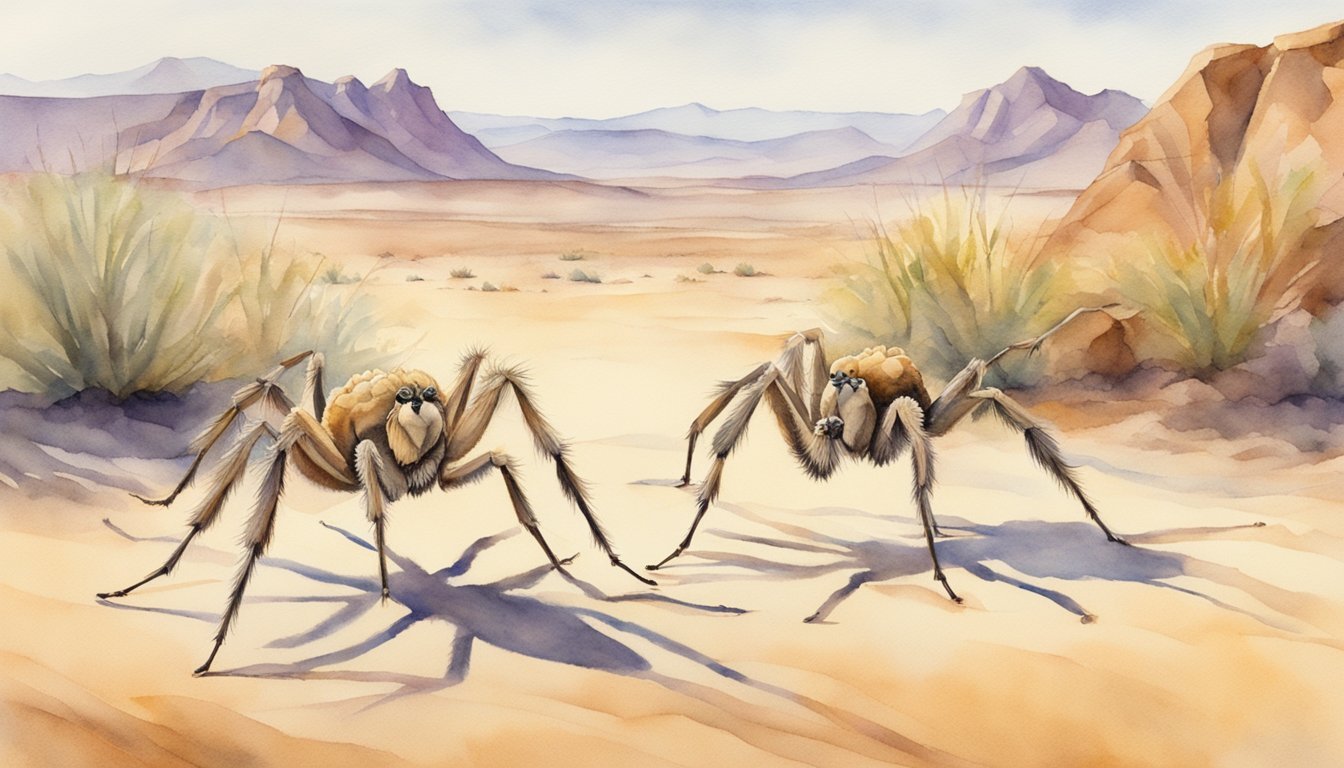Introduction to Camel Spiders
Camel spiders, also known as wind scorpions or solifugae, are a fascinating yet misunderstood group within the class Arachnida. Despite their name, they are not true spiders, and their unique characteristics set them apart from other arachnids.
Physical Characteristics
Camel spiders are a unique order of arachnids displaying a range of physical attributes that distinguish them from true spiders and scorpions. The body length of camel spiders typically ranges from a few millimeters to about 15 centimeters, including their legs, which contributes to their formidable appearance.
Fascinatingly, these creatures seem to have ten legs; however, they have eight true legs with two additional leg-like appendages called pedipalps. These pedipalps are sensory organs that are used to capture prey and aid in navigation. Their large, powerful chelicerae (jaw-like structures) are quite pronounced and are capable of capturing and macerating their prey. They have no silk glands like true spiders and do not spin webs.
Their abdomen is segmented and unlike true spiders, they have a distinct waist between the thorax and abdomen. Camel spiders have simple eyes—usually two—but their vision is poor, and they primarily rely on their highly sensitive appendages to interact with their environment and detect prey.
Behavior and Habitat
Camel spiders are predominantly found in desert regions around the world, from the Middle East to both North American and African deserts. These arachnids have been the subject of many myths, but in reality, they are non-venomous and do not pose a considerable threat to humans.
Their behavior is often a sight to behold, especially with their remarkable speed which enables them to move across the desert at speeds up to 10 miles per hour. This adaptability to desert temperatures is also evident in their nocturnal habits; camel spiders often hunt at night to avoid the extreme heat. They are carnivores, voraciously feeding on ground-dwelling insects such as termites, beetles, and other small arthropods.
The often-overlooked role of camel spiders as predators helps to control the populations of other invertebrates and thus, they play an important ecological role in the desert habitats they occupy.
For further insight into their physical attributes and their place within the arachnid world, their enigmatic lifestyle and the role they play in desert ecosystems, click on the respective descriptions: Camel Spider Facts, Pictures & In-Depth Information. Desert Arachnids, Camel Spiders: Facts & Myths | Live Science, All You Need to Know About the Camel Spider – Wild Explained, Camel Spiders (Solifugae) – Facts, Types, Size, Habitat, Diet, & Pictures, Camel Spider | National Geographic.
Camel Spider Interactions

Camel spiders, although often shrouded in myth, engage in various interactions both with humans and animals, and they hold a distinct place in cultural beliefs. Their encounters in the wild reflect their unique adaptations for survival.
Human and Animal Encounters
The camel spider’s reputation for speed is well-founded, with some able to run up to 10 mph, allowing them to chase down prey or escape threats. Despite fearsome appearances, their jaws, or chelicerae, are adapted primarily for hunting small animals like insects, lizards, and other arthropods rather than humans. Though camel spiders are not venomous, their bites can be painful due to their large jaws, yet they do not pose a serious danger to humans. Bites are usually a result of self-defense rather than aggression. These nocturnal creatures often burrow or find shelter during the day to avoid the heat, emerging at night to feed.
Cultural Impact and Misconceptions
Camel spiders have been the subject of many urban legends, especially among soldiers in Middle Eastern countries where these arachnids are commonly found. Tales of camel spiders chasing after humans or camels are exaggerations; these animals are usually after the shade these large bodies provide. Camel spiders are also part of the folklore in Africa and the United States, with stories often exaggerating their size and danger. While they are indeed found in arid regions and can appear hairy and intimidating, camel spiders do not have a tail or the ability to hiss or make loud noises, as some tales suggest. Misconceptions about their speed and their threat to larger animals, including humans, are often a result of perspective and unfamiliarity with these solitary desert dwellers. In reality, camel spiders play a crucial role in the ecosystems they inhabit, often helping to control populations of other small creatures.

